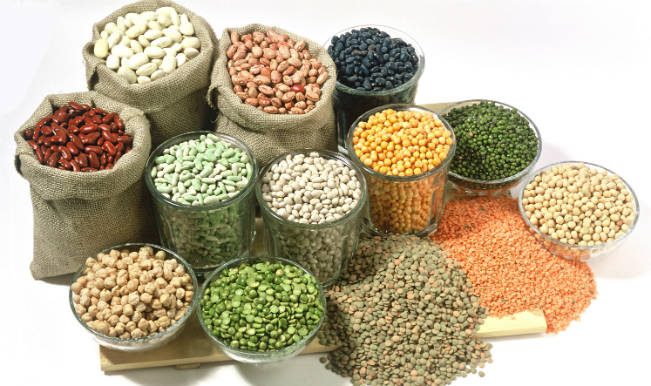Beans (Phaseolus vulgaris) Farmers Community
Enhancing Bean Yield and Nutritional Quality through Improved Seed Varieties
- This topic is empty.
- AuthorPosts
- April 11, 2025 at 6:22 am #625879
 Agric4ProfitsKeymaster
Agric4ProfitsKeymaster
Beans are an essential source of protein, fiber, and other nutrients, playing a vital role in the diet of many people worldwide.
However, challenges such as climate change, pests, diseases, and soil degradation can negatively impact bean yield and nutritional quality. To overcome these challenges, improving bean seed varieties is a crucial strategy.
Enhanced seed varieties, developed through breeding techniques, offer numerous benefits, including higher yields, better resistance to environmental stress, and improved nutritional content. This article explores how improved bean seed varieties contribute to enhancing both the yield and nutritional quality of beans.
1. Development of High-Yielding Varieties
One of the primary goals of improving bean seed varieties is to increase yield potential. Through selective breeding and genetic modification, researchers have developed bean varieties that produce higher yields under varying environmental conditions.
These high-yielding varieties are often more resistant to common stresses such as drought, pests, and diseases, allowing farmers to achieve greater productivity even in less-than-ideal conditions. Additionally, higher yields contribute to better food security and economic stability for farmers, ensuring that beans remain a reliable and affordable source of nutrition for communities worldwide.
By focusing on yield improvement, breeders can help meet the growing demand for beans as a key food source.
2. Enhanced Pest and Disease Resistance
Pests and diseases are significant threats to bean crops, leading to yield loss and reduced quality. Through the development of improved seed varieties, breeders have been able to enhance the natural resistance of beans to common pests and diseases such as root rot, aphids, and rust.
Resistant varieties reduce the need for chemical pesticides, lowering production costs and minimizing the environmental impact of farming.
These varieties also help farmers maintain consistent yields, even in regions prone to pest outbreaks. By incorporating genetic traits for pest and disease resistance, improved bean seed varieties contribute to both better productivity and sustainability.
3. Increased Nutritional Content
The nutritional quality of beans is equally important as their yield, as beans are a crucial source of essential nutrients for many populations, particularly in developing countries. Improved bean seed varieties can be bred to enhance their nutritional profile, increasing levels of protein, iron, zinc, and other essential vitamins and minerals.
Biofortification, the process of increasing the micronutrient content in crops through breeding, has led to the development of beans with higher nutritional value.
These nutrient-dense varieties help combat malnutrition and micronutrient deficiencies, especially in regions where beans serve as a major dietary staple. By enhancing the nutritional quality of beans, improved seed varieties play a critical role in addressing public health challenges.
4. Climate Resilience through Drought and Heat Tolerance
Climate change is causing more frequent and intense droughts and heatwaves, which severely affect crop productivity. The development of bean varieties that are more resilient to these environmental stresses is crucial for ensuring consistent production in the face of climate variability.
Through genetic improvements, breeders have developed drought-tolerant and heat-resistant bean varieties that require less water and can withstand higher temperatures.
These varieties ensure stable yields even in areas experiencing water scarcity or heat stress, making them ideal for regions where climate change is expected to impact crop production. Climate-resilient bean varieties contribute to sustainable agriculture and long-term food security.
5. Faster Growth and Early Maturity
Another important trait of improved bean seed varieties is faster growth and early maturity. Traditional bean varieties may require several months to reach maturity, which can be a problem in regions with short growing seasons or unpredictable weather patterns.
Improved seed varieties that mature earlier enable farmers to harvest beans before the onset of unfavorable conditions such as heavy rains or early frost.
Additionally, faster-growing varieties allow for multiple cropping cycles in a year, maximizing the use of available land and water resources. Early maturity not only enhances yield potential but also provides farmers with greater flexibility in their cropping systems, contributing to more resilient food production.
In conclusion, improving bean seed varieties is a key strategy for enhancing both the yield and nutritional quality of beans. By developing high-yielding varieties, enhancing resistance to pests and diseases, increasing nutritional content, improving climate resilience, and reducing growth time, improved seed varieties provide a multifaceted solution to the challenges faced by bean farmers worldwide.
These advancements not only ensure greater productivity but also contribute to better food security and improved public health, particularly in regions where beans are a dietary staple. As climate change and population growth continue to impact agriculture, the development and adoption of improved bean seed varieties will be essential for sustainable and nutritious food production.
- AuthorPosts
- You must be logged in to reply to this topic.

